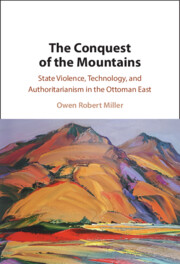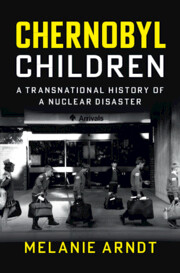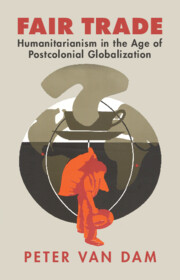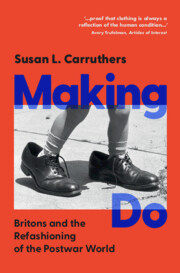Refine search
Actions for selected content:
205 results
Introduction
-
- Book:
- Charity After Empire
- Published online:
- 18 December 2025
- Print publication:
- 31 January 2026, pp 1-26
-
- Chapter
- Export citation

Charity After Empire
- British Humanitarianism, Decolonisation and Development
-
- Published online:
- 18 December 2025
- Print publication:
- 31 January 2026
Introduction
-
-
- Book:
- Hunger Redraws the Map
- Published online:
- 01 November 2025
- Print publication:
- 20 November 2025, pp 1-17
-
- Chapter
- Export citation
14 - “Hunger Draws the Map”
-
-
- Book:
- Hunger Redraws the Map
- Published online:
- 01 November 2025
- Print publication:
- 20 November 2025, pp 391-433
-
- Chapter
- Export citation

The Conquest of the Mountains
- State Violence, Technology, and Authoritarianism in the Ottoman East
-
- Published online:
- 14 November 2025
- Print publication:
- 11 December 2025
18 - Nongovernmental Organizations
-
-
- Book:
- Explaining the History of American Foreign Relations
- Published online:
- 24 October 2025
- Print publication:
- 13 November 2025, pp 363-384
-
- Chapter
- Export citation
6 - The Enduring Logic of Mercy
-
-
- Book:
- Reckoning with Law in Excess
- Published online:
- 09 September 2025
- Print publication:
- 25 September 2025, pp 144-162
-
- Chapter
-
- You have access
- Open access
- HTML
- Export citation
Manning Humanitarian Programs: The Impossible Bargain of Refugee Men
-
- Journal:
- Politics & Gender / Volume 21 / Issue 3 / September 2025
- Published online by Cambridge University Press:
- 24 September 2025, pp. 488-508
-
- Article
-
- You have access
- Open access
- HTML
- Export citation
6 - Children
-
- Book:
- Making Antifascist War
- Published online:
- 28 October 2025
- Print publication:
- 14 August 2025, pp 191-215
-
- Chapter
- Export citation

Chernobyl Children
- A Transnational History of a Nuclear Disaster
-
- Published online:
- 26 June 2025
- Print publication:
- 14 August 2025
Gothic humanitarianism: Moving beyond the securitised approach to migration while embracing fear
-
- Journal:
- Review of International Studies / Volume 51 / Issue 5 / September 2025
- Published online by Cambridge University Press:
- 20 June 2025, pp. 839-859
- Print publication:
- September 2025
-
- Article
-
- You have access
- Open access
- HTML
- Export citation
Conclusion
-
- Book:
- Fair Trade
- Published online:
- 01 May 2025
- Print publication:
- 15 May 2025, pp 177-193
-
- Chapter
- Export citation
Introduction
-
- Book:
- Fair Trade
- Published online:
- 01 May 2025
- Print publication:
- 15 May 2025, pp 1-18
-
- Chapter
- Export citation
1 - Handicrafts
-
- Book:
- Fair Trade
- Published online:
- 01 May 2025
- Print publication:
- 15 May 2025, pp 19-42
-
- Chapter
- Export citation
4 - The Growing Specialization of INGOs
-
- Book:
- Crowded Out
- Published online:
- 24 May 2025
- Print publication:
- 15 May 2025, pp 85-123
-
- Chapter
-
- You have access
- Open access
- Export citation
2 - Sugar
-
- Book:
- Fair Trade
- Published online:
- 01 May 2025
- Print publication:
- 15 May 2025, pp 43-68
-
- Chapter
- Export citation

Fair Trade
- Humanitarianism in the Age of Postcolonial Globalization
-
- Published online:
- 01 May 2025
- Print publication:
- 15 May 2025

Making Do
- Britons and the Refashioning of the Postwar World
-
- Published online:
- 24 April 2025
- Print publication:
- 24 April 2025
Introduction
-
- Book:
- Making Do
- Published online:
- 24 April 2025
- Print publication:
- 24 April 2025, pp 1-18
-
- Chapter
- Export citation
Epilogue
-
- Book:
- Making Do
- Published online:
- 24 April 2025
- Print publication:
- 24 April 2025, pp 292-293
-
- Chapter
- Export citation
